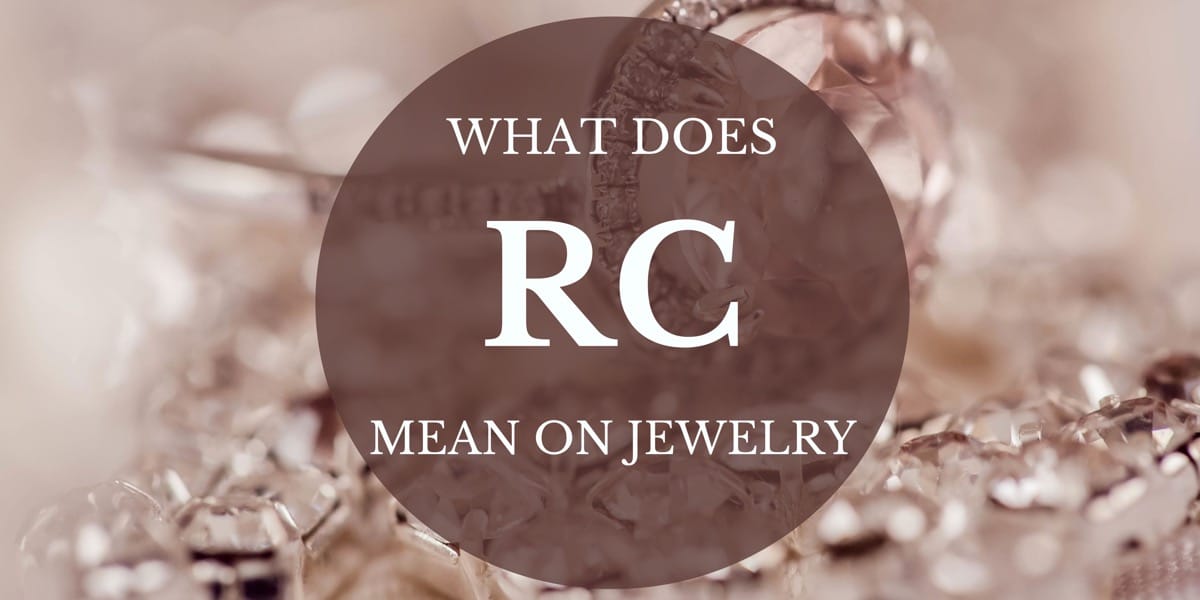The world of jewelry holds countless mysteries, whispering stories through intricate designs and hidden markings. Among these enigmas lies the “RC” mark, adorning pieces that range from antique silver to contemporary gold. But who is the “RC” behind this mark, and what secrets does it hold?
This comprehensive guide delves into the fascinating history and diverse interpretations of the “RC” jewelry mark. We’ll embark on a journey through time, uncovering the mark’s origins, identifying renowned makers, and exploring its significance in different eras and styles. Whether you’re a seasoned collector, a curious admirer, or simply stumbled upon a piece with this intriguing mark, this blog post is your key to unlocking its secrets.
A Journey Through Time: The Evolving Story of the “RC” Mark
The “RC” mark doesn’t have a single, definitive origin. Its meaning has evolved over centuries, adopted by various craftspeople across the globe. Here are some of the most prominent interpretations:
- Early Silversmiths: In 18th-century England, the “RC” mark was used by several silversmiths, including Robert Cox and Robert Cruickshank. Their pieces often bore additional hallmarks indicating the city and date of manufacture.
- American Silversmiths: Across the Atlantic, American silversmiths like Robert Campbell of Baltimore and Richard Crowninshield of Salem, Massachusetts, also employed the “RC” mark. Identifying their work often requires additional context, such as specific design elements or historical records.
- Modern Jewelry Designers: In the 20th and 21st centuries, the “RC” mark has been adopted by contemporary jewelry designers worldwide. Some notable examples include Roberto Coin, an Italian designer known for his intricate goldwork, and Rustic Cuff, a brand specializing in handcrafted leather and metal bracelets.
Identifying the Maker: Key Considerations
Attributing a specific maker to the “RC” mark requires careful examination. Here are some crucial factors to consider:
- Style and Period: The design style and materials used can offer clues about the piece’s era and origin. For example, an Art Deco-inspired piece with geometric patterns is less likely to be from an 18th-century silversmith than a mid-20th century designer.
- Additional Markings: Look for other markings alongside the “RC,” such as hallmarks, date letters, or maker’s logos. These markings can provide valuable information about the origin, metal content, and authenticity of the piece.
- Provenance: If you have any information about the piece’s history or previous ownership, it can be invaluable in narrowing down the maker. Researching known designers or silversmiths from the indicated period and location can also be helpful.
Beyond Identification: Understanding the Value of “RC” Jewelry
The value of “RC” jewelry depends on several factors, including:
- Maker and Origin: Pieces by established designers or historical silversmiths typically command higher prices.
- Material and Condition: The type of metal, gemstones, and overall condition of the piece play a significant role in its value.
- Rarity and Design: Unique and well-crafted designs, especially from renowned makers, can fetch higher prices.
- Market Trends: The current market demand for specific designers, styles, or materials can influence the value.
Remember: Identifying the maker and understanding the context of the “RC” mark are crucial first steps. However, for an accurate valuation, consulting a qualified appraiser is always recommended.
Conclusion
The “RC” jewelry mark stands as a testament to the enduring legacy of craftsmanship and artistic expression. From its historical roots to its contemporary interpretations, it signifies the dedication and creativity of countless jewelry makers worldwide. By unraveling its secrets, we gain a deeper appreciation for the stories each piece tells, enriching our understanding of the fascinating world of jewelry.
So, the next time you encounter a piece bearing the enigmatic “RC” mark, remember – it’s not just a mark; it’s a gateway to a hidden story waiting to be discovered.

